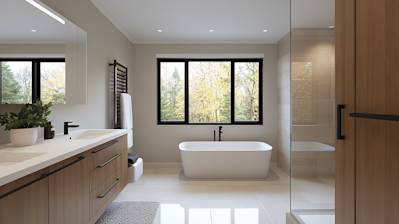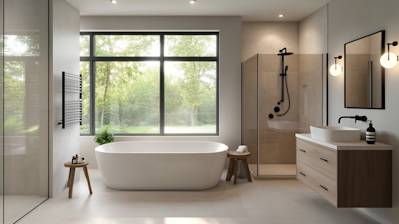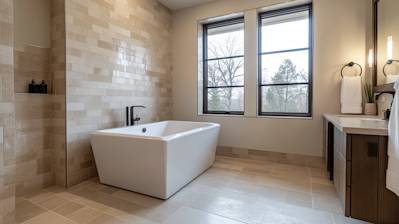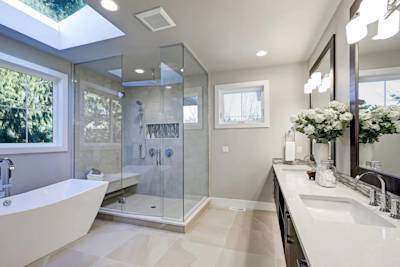Are you interested in transforming your bathroom layout by converting your shower to a tub? This conversion process can add a fantastic touch to your bathroom, making it more valuable and appealing. This comprehensive guide will walk you through all the necessary steps and considerations.
Understanding the Conversion Process
Before you start tearing out your shower, it's crucial to understand the process so that you can plan appropriately. Converting a shower to a tub involves several steps, starting from dismantling the existing shower unit, preparing the site for a new bathtub, fitment, plumbing, and final finishes.
Conversion Considerations: Is It the Right Move?
While converting a shower to a tub is a huge project, it's worth considering for several reasons:
- Better relaxation: Tubs offer a soothing and relaxing soak, unlike showers.
- Increased home value: Homes with at least one bathtub are often more valuable in the market.
- Improved aesthetics: Bathtubs, especially freestanding ones, can improve the overall design of your bathroom.
Demolition Stage for Converting Shower to Tub
The first step is to demolish or take down the existing shower. Depending on the shower type and the bathroom design, this might involve:
- Turning off and disconnecting water supply
- Removal of shower doors and panels
- Elimination of shower tray or base
- Disposing of debris
Preparation Stage for Tub Installation
Once the shower is out of the way, it's time to prepare the space for your new tub. This could include:
- Assessing space requirements
- Plumbing modifications
- Structural reinforcement
- Preparation of the tub support base
Choosing the Right Tub
Selecting the right tub is essential for a successful conversion. Generally, there are two types of bathtubs - alcove and freestanding.
Alcove Tubs
Typically designed to fit into a three-walled enclosure, alcove tubs are an excellent selection for smaller bathrooms.
Freestanding Tubs
A freestanding tub, as the name suggests, stands alone anywhere in your bathroom. This type can add a touch of luxury to your space but requires more room.
Also, remember to consider the tub material. Acrylic and fiberglass are two popular choices because they're both lightweight and affordable.
Installation Stage for Tub
Then comes the most complex part of the process — the install. This stage may involve:
- Ensuring accurate leveling
- Connecting drain and overflow
- Adding tub surround or tiling
- Securing the tub to the wall or base
- Plumbing connection and testing
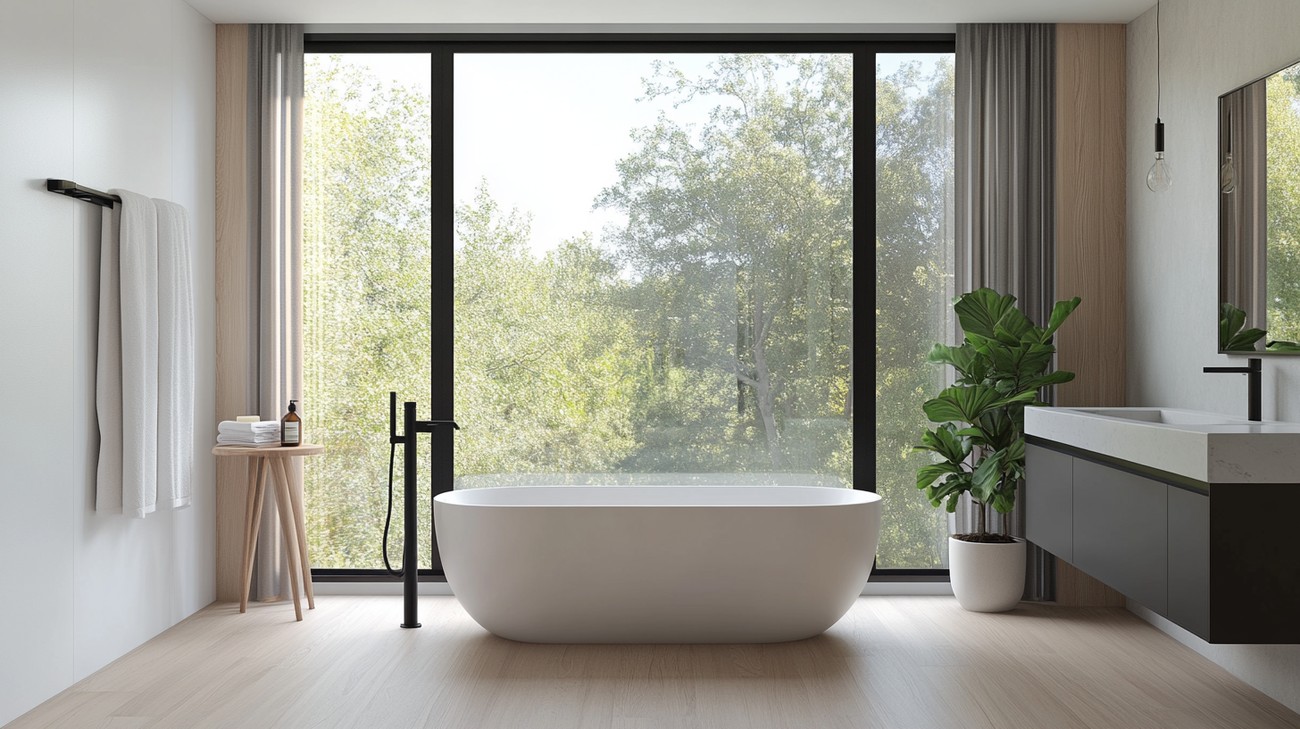
Frequently Asked Questions about Convert Shower To Tub
What are the steps involved in converting a shower into a tub?
The steps for converting a shower to a tub usually involve several processes. First, the existing shower stall will be removed. Then, plumbing adjustments might be necessary, depending on the tub you're installing. Once the plumbing is adjusted, your tub will be put in place, installed, and then finished or sealed as necessary. Finally, any remaining modifications like tiling or painting can be done.
What types of tubs are best for shower conversions?
When converting from shower to tub, you can choose from various types of tubs, such as soaking tubs, whirlpool tubs, freestanding tubs, or alcove tubs. The best tub for your space largely depends on your personal preference, space availability, and budget.
Can you do a shower to tub conversion yourself?
If you're an experienced DIYer, a shower to tub conversion is potentially a project you could tackle yourself. However, remember that this is a big project involving plumbing modifications and precise measurements. Hiring a professional could be the safer and more efficient route, guaranteeing a quality job done right the first time.
How long does a shower to tub conversion take?
The timeframe to convert a shower to a tub depends on many factors, including crew size, project complexity, and whether any unexpected issues arise. On average, you can expect the conversion process to take 1 to 3 days when done by professionals.
Does converting a shower to tub increase home value?
While the specific impact can depend on various factors, typically, a well-executed shower to tub conversion can increase your home's value. It makes the home more appealing to prospective buyers, especially families with young children who prefer bathtubs.
How much space is required for a shower to tub conversion?
Generally, a standard tub is about 60 inches long and 30 to 32 inches wide, while a shower typically measures 48 inches long and 34 inches wide. Therefore, converting a shower to a tub does require additional space. It's important to measure your bathroom accurately before proceeding.
What difficulties might arise during a shower to tub conversion?
During a shower to tub conversion, you may encounter issues like outdated plumbing, insufficient space, drainage complications, and hidden water damage. This is why it's crucial to work with professionals, who can tackle these issues efficiently.
Can I convert a tub to a shower and then back to a tub?
Yes, theoretically you can convert a shower to a tub, then back to a shower, and so on. However, this would be a significant undertaking and a costly endeavor. It’s best to carefully consider your needs and wants before making such a decision.

Pros of Converting a Shower to Tub
Enhanced Functionality
Converting a shower to a tub can often mean enhanced functionality for a bathroom. This is because a bathtub provides more versatility than a standalone shower. With a bathtub, you can choose to either indulge in a long soak or take a quick shower.
Aesthetic Appeal
Bathtubs, particularly free-standing or clawfoot designs, can be a stunning focal point in a bathroom. They are often associated with luxury and elegance, lending an air of sophistication to any living space. If you are looking to enhance the aesthetic appeal of your bathroom, converting your shower to a tub may be your best option.
Increased Home Value
In many cases, having a bathtub in the house can increase its overall value. Many potential home buyers, especially those with young families, consider a bathtub a must-have feature in a bathroom. Thus, investing in converting a shower to a tub may yield significant returns when you decide to put your house on the market.
Improved Relaxation
The inclusion of a bathtub in your home offers a way to destress and unwind. There's nothing quite like a good soak in a tub filled with warm water at the end of a long day. This feature is not offered by showers.
Better for Families with Kids
Bathtubs are generally safer for young children and easier for parents when it comes to bath time. Kids can play safely under the supervision of an adult, making tubs an ideal solution for families with kids.
Cons of Converting a Shower to Tub
Takes Up More Space
One of the major cons of converting a shower to a tub is that tubs typically require more space. If your bathroom is not especially large, you may end up with a cramped space after the conversion.
Longer Installation Time and Potential Remodelling
Installing a bathtub where a shower once stood may involve a long and complex process. A bathtub cannot be simply slotted in where a shower tray once sat; instead, careful remodelling of the bathroom may be required. You'll need to consider drainage, tiling, and potentially door swings or bathroom storage.
More Expensive Water Bills
A bathtub can hold up to 80 gallons of water, compared to a shower, which uses about 25 gallons on average. Therefore, replacing a shower with a tub can significantly increase your water consumption, leading to greater expenses in terms of water bills.
Higher Installation and Maintenance Costs
The cost of a bathtub, and its installation, can be quite pricey. Plus, they may require more maintenance than showers due to issues such as caulking deterioration and potential for water pooling.
Less Accessible
Showers are generally more accessible than tubs, especially for those with mobility issues. If you or a family member has trouble stepping over the side of a bath, turning your shower into a tub might make bathing more complicated and potentially unsafe.
Potentially Less Environmentally Friendly
Using more water doesn't just impact your household bills; it also has an environmental consequence. By consuming more water for baths instead of showers, the change could have a negative impact on your environmental footprint.

Myths and Misconversions in Converting Showers to Tubs
There are several misconceptions around the topic of converting showers into bathtubs. Plenty of homeowners are intrigued by the idea of replacing their shower with a more traditional and relaxing bathtub. However, misinformation can lead to unnecessary complications, and in some cases, unsatisfied expectations. Let's clear up some of those myths.
Myth 1: Converting a Shower to a Tub is a Simple DIY Job
This misconception probably arises from the belief that since the plumbing already exists for a shower, it should be straightforward to swap it out for a tub. In truth, the process is a lot more complicated than it may seem.
The Reality
Creating a bathtub setup involves much more than just replacing the shower tray with a bathtub. You need to consider elements like the floor structure, which may need to be reinforced to bear the weight of a full bathtub. The existing drainage system may need to be rearranged to account for the bathtub's larger drainage requirement. Electrical wiring may need to be modified, especially if you plan on installing a whirlpool tub. These factors make it a job best left to experienced professionals, not to be taken up as a weekend DIY project.
Myth 2: Any Shower Can Be Easily Converted into a Tub
This misconception is similar to the first, but is based on the assumption that a shower's existing space can seamlessly accommodate a bathtub.
The Reality
In reality, the dimensions of the average shower cubicle may not have enough space for a standard bathtub's length and breadth. A full-length standard tub typically requires a larger footprint than a shower. If the shower is not located in a sizeable bathroom, a conversion might involve altering the structure of the room or choosing a smaller-than-standard tub.
Myth 3: A Shower-to-Tub Conversion is Always a Good Idea
The allure of a relaxing soak in a bathtub can lead homeowners to believe that converting their shower into a bathtub is a positive change.
The Reality
This is subjective and depends largely on lifestyle and personal preference. For many people, especially those who are elderly or have mobility issues, a shower may be safer and more convenient. Shifting to a tub could make their bathing experience more difficult and potentially dangerous. While a tub can add a level of luxury, it's crucial to consider all aspects of a bathroom's usage and the homeowners' comfort before making the switch.
Myth 4: Converting a Shower to a Tub Will Always Increase Home Value
Bathtubs are often seen as a luxury item that ought to increase the value of a home.
The Reality
While having a bathtub might appeal to certain potential homebuyers, others prioritize the convenience and modernity of a walk-in shower. A house's value depends on many factors and market demands. Thus, converting a shower into a tub might not automatically lead to an increase in home value.
Myth 5: A Tub Will Use Less Water than a Shower
This myth is likely due to the visual impression of a shower constantly spraying water while a bathtub fills up only once.
The Reality
Consider the capacity of a bathtub versus the flow rate of a shower. A standard bathtub can hold up to 50 gallons of water, while a low-flow showerhead uses about 2 gallons per minute. For a 10-minute shower, the water usage would be 20 gallons - significantly less than a filled tub. Therefore, if conserving water is a priority, sticking with a shower might be a smarter choice.
Clearing up these misconceptions helps to ensure that when you decide to convert a shower into a tub, you're making an informed and practical decision that suits your lifestyle, needs, and expectations.
Summary
Converting a shower to a tub can be a practical solution for many homes, particularly if you have young children or elderly family members. Not only does it provide an in-home spa experience, but it also increases the value of your home. However, it's important to remember that such a conversion is not a weekend DIY project. Enlisting the help of professionals may be necessary in order to ensure proper plumbing and installation.
The process to convert a shower into a tub can be so much more than simply switching one for another. It's about adapting the space to fit your unique lifestyle. The decision to convert should be based on personal lifestyle, space availability, and costs. But one thing is certain - once you convert a shower to a tub, it completely transforms your bathroom environment.
With careful thought and planning, converting a shower to a tub can be a great improvement in any bathroom. Whether it's the relaxation at the end of a long day, the ease of bathing small children or simply changing the aesthetics of your bathroom, a tub can offer many benefits. While it may require some investment in time and money, the long term benefits can certainly make it worthwhile.
About GoodLife Home Renovations
GoodLife Home Renovations of Springfield, MO is your neighborhood go-to crew for all your home remodeling needs. Specializing in breathing new life into old homes, from basements to roofs and everything in between, we pride ourselves on delivering top-quality results that exceed our customers' expectations. As a local company, we're not just renovating houses, we're upgrading our community, one home at a time. Let us show you what GoodLife Home Renovations can bring to your next home improvement project—promise, you won't be disappointed!



